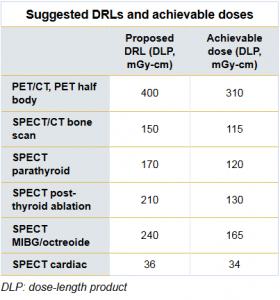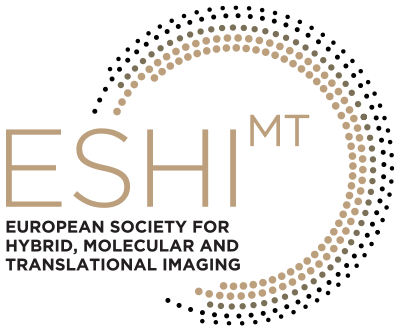A new U.K.-wide survey of radiation dose administered in a broad range of PET/CT and SPECT/CT imaging procedures has resulted in diagnostic reference levels (DRLs) for six common examinations, including cardiac and bone SPECT/CT.
An article by Rebekah Moan, AuntMinnieEurope.com staff writer
.
Researchers gathered CT protocol and dosimetry data for three PET/CT and seven SPECT/CT exams from 47 centers across the U.K. Doing so allowed the study team, led by Gareth Iball, lead clinical scientist in medical physics at Leeds General Infirmary in the U.K., to establish national DRLs.
“With the establishment of national DRLs and achievable dose, it will be possible to optimize practice across the U.K.,” the authors wrote in Nuclear Medicine Communications (June 2017, Vol. 38:6, pp. 459-470).
Why DRLs for hybrid imaging?
Hybrid imaging has increased in popularity in recent years, but national DRLs do not currently exist. Within the U.K., they exist for the administration of radioactive substances in nuclear medicine and diagnostic CT examinations but not for the use of CT in hybrid imaging.
“DRLs for standard CT investigations cannot be applied to hybrid imaging because of differences in the clinical purpose and scan range,” the authors noted. “This is not just a problem within the U.K.; there is a general paucity of published national or international guidance on typical CT doses in hybrid imaging.”
To address this, the Institute of Physics and Engineering in Medicine established a working party to conduct a nationwide survey of CT doses for a variety of hybrid imaging procedures, with the aim of generating proposed U.K. DRLs, which Iball and colleagues have done with their study.
 They gathered CT protocol and dosimetry data for brain and cardiac imaging using PET/CT. For SPECT/CT, they looked at a range of procedures, including bone scans, cardiac images, and metaiodobenzylguanidine (MIBG) parathyroid, post-thyroid ablation, and sentinel node tests. They divided the data according to CT purpose (attenuation correction, localization, or diagnostic) and used third-quartile values of scanner average dose metrics to generate suggested DRLs. They established achievable doses from the median of the dose distributions.
They gathered CT protocol and dosimetry data for brain and cardiac imaging using PET/CT. For SPECT/CT, they looked at a range of procedures, including bone scans, cardiac images, and metaiodobenzylguanidine (MIBG) parathyroid, post-thyroid ablation, and sentinel node tests. They divided the data according to CT purpose (attenuation correction, localization, or diagnostic) and used third-quartile values of scanner average dose metrics to generate suggested DRLs. They established achievable doses from the median of the dose distributions.
“This study has been able to generate data from a truly representative cross-section of U.K.-wide practice,” the authors wrote. “Furthermore, this study addresses the intended clinical purpose of the CT, which can be a complicating factor when attempting to quantify CT doses for hybrid imaging.”The DRLs can be used to benchmark local practice, and, along with the achievable doses, centers will be able to ensure patient radiation exposures are as low as reasonably practicable, consistent with the examination purpose, they added. The ratio of maximum-to-minimum mean doses between centers varied from 3.6 to 35, highlighting the need for DRLs.
“Hybrid imaging users can take steps toward optimization by paying heed to the suggested national DRLs and achievable doses presented in this study, ensuring that the CT dose level is appropriate for the intended purpose of the CT image data, and that the CT scanned length is limited to that which is required clinically,” the authors wrote.
The researchers have no definite plans for a follow-up study, but Iball told AuntMinnieEurope.com he hopes someone will reaudit in a few years to see the effect of having DRLs. Additionally, he hopes an audit of pediatric doses will be done in the near future.
An article by Rebekah Moan, AuntMinnieEurope.com staff writer
